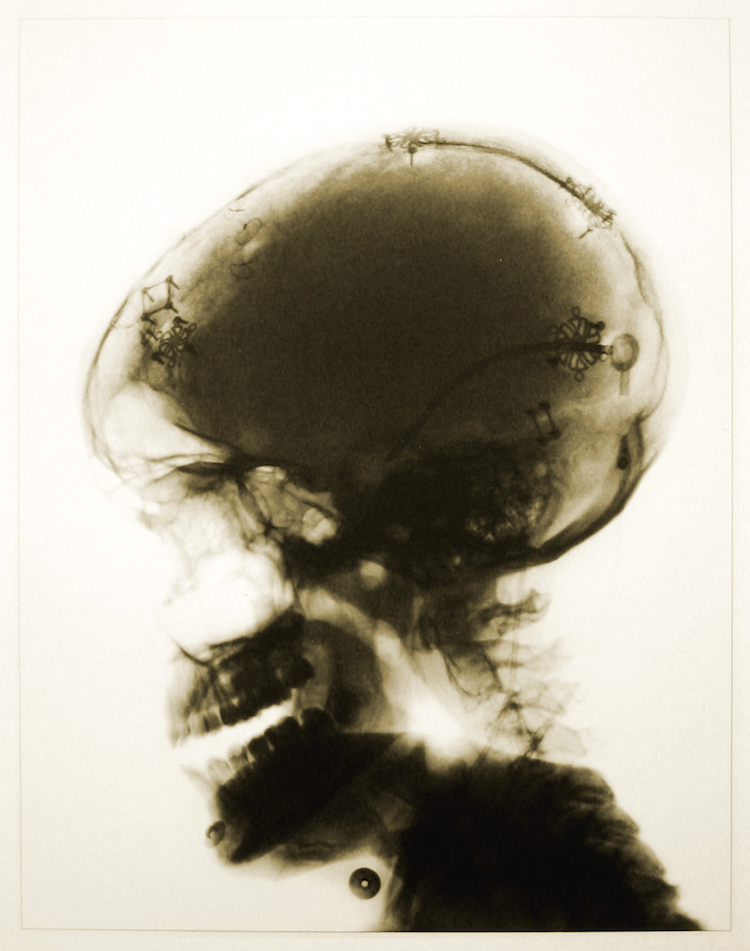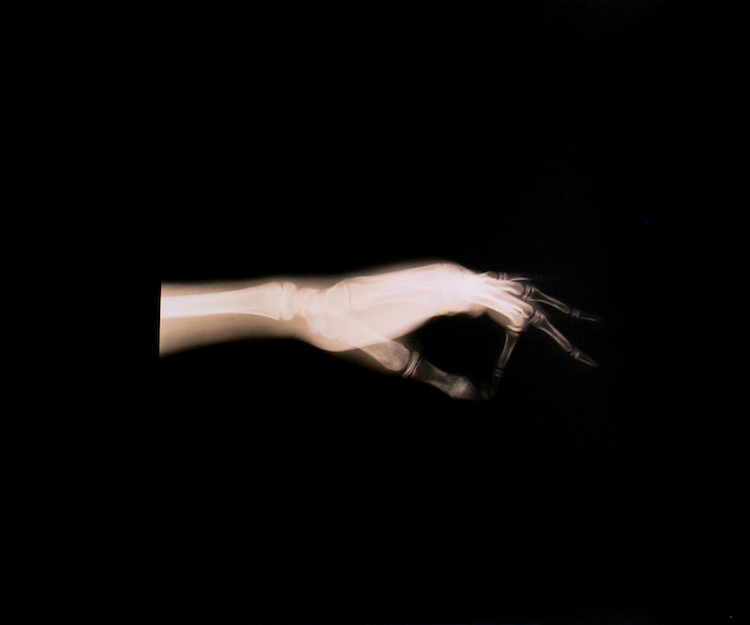Painting with Light
Remarks on a Studio Visit with Jo Sandman
Boston has never been quite hospitable to conceptual artists. There is a long tradition here that prioritizes beautiful objects, eschewing ideas alone as a worthy stand in for artistic skill. But photographer and interdisciplinary artist Jo Sandman, who maintains her studio at Brickbottom in Somerville Massachusetts, pairs both veins, creating a conceptual aesthetics unlike others I have seen. A painter by training, Sandman began working in photography in 1998. “Each new generation kicks the previous generation in the shins,” she remarked over croissants in her studio. Having worked with Robert Motherwell and Hans Hoffman, Sandman leaned away from Abstract Expressionism, carving out her own niche in paintless paintings (long before Mark Bradford) in her Folded series: inspired by Minimalism, she marked canvases without paint, removing them from their stretchers and folding them in on themselves. “We didn’t need another artist doing representational work,” she noted.
 So when Sandman took up photography, she saw it as a means to convey ideas. A painter who worked without paint, she became a photographer who made images without a camera. Lensless photography, Van Dyke Brown photograms and found objects, were her artistic materials. Sandman was drawn to their “sensuous surfaces,” to the mixing of chemicals to coat her paper, controlling the light source to reveal her images. “It was a very painterly process,” she shares, and the beginning of what I like to call Sandman’s “Sensuous Conceptualism.” Finding rocks and stones along the beach that resembled human skulls, Sandman could take the human form as her subject without succumbing to representationalism. She would later transform those photograms with inks and crayon, creating torsos that remind one of Jean-Michel Basquiat’s Riding with Death.
So when Sandman took up photography, she saw it as a means to convey ideas. A painter who worked without paint, she became a photographer who made images without a camera. Lensless photography, Van Dyke Brown photograms and found objects, were her artistic materials. Sandman was drawn to their “sensuous surfaces,” to the mixing of chemicals to coat her paper, controlling the light source to reveal her images. “It was a very painterly process,” she shares, and the beginning of what I like to call Sandman’s “Sensuous Conceptualism.” Finding rocks and stones along the beach that resembled human skulls, Sandman could take the human form as her subject without succumbing to representationalism. She would later transform those photograms with inks and crayon, creating torsos that remind one of Jean-Michel Basquiat’s Riding with Death.
Sandman did not have qualms about working with stones, but her work would later develop in ways that made her question her relationship with Realism. When her radiologist took an XRAY of her hand, Sandman saw an “aesthetic, not diagnostic” image. The beauty of the image caught her eye. She soon began collecting XRAYs from her radiologist, hospitals, and a research dentist studying bone development and bite dentition (before HEPA rules on privacy closed the door on her process). Sandman was still working with found objects, creating paradoxically intimate and anonymous portraits by transforming XRAYs. “If you give away an XRAY and remove all of the data associated with it, it becomes totally anonymous,” she pointed out, showing me selections of her Daizo prints and the XRAYs from which they are made on her light box.


Her Light Memory series falls in the Vanitas tradition. “They’re Memento Mori,” she says, “reminders of death,” much like skulls or flickering candles in still life paintings. But working so closely with the human form, Sandman had concerns about her work being too representative. “Does it blow the whole aesthetic?” she wondered. Her solution was to transform her XRAYs completely, much the way she had reshaped the stones she collected for her photograms. Where she had begun by photocopying the XRAYs, and later by having them printed by an architectural reproduction company (as blueprints), she would soon, with the help of Gus Kayafas at Palm Press, begin mastering darkroom techniques and making truly archival photographs. She describes the Kayafas’ Atelier as a “hive of activity” where she learned to convert XRAYs to internegatives to negatives.
Jo Sandman works at the intersection of art and science. Her’s is not scientific photography, but rather the transformation of medical imaging into aesthetic objects. While Light Memory is about mortality, it is also a way of bringing back the dead, of giving life again to bones. Her anonymous portraits are oxymorons. Sandman describes her process as being “very open.” She is “very stimulated by experiences and what I see” and “finds inspiration everywhere.” Once, when stuck in a garage waiting for her car to be repaired, Sandman spotted some interesting tubbing. She asked to buy all of it. “Lady, what kind of car do you have?” the mechanic retorted. “These aren’t for my car,” she corrected. Instead, the tubbing was for a sculpture Continuity that she would install along a 40 ft wall at the Danforth Museum of Art.

A truly interdisciplinary artist, Jo Sandman is a Boston-based photographer who has long made powerful and well-executed conceptual work. She does not shirk beauty for an idea, but nor does she favor merely pretty pictures. She has been a Professor at both Wellesley College and Massachusetts College of Art and Design. Photos from her Light Memory series are on view now through December 20 at the Photographic Resource Center, in collaboration with the Griffin Museum of Photography, as part of the NEPR Showcase. Always ready to try something new, Sandman is at work on a series that combines collage and layering with XRAYs. I had the pleasure of seeing this work, still under wraps, in her studio. For those whose interest has been piqued, be sure to see Jo Sandman’s upcoming exhibition, comprised of all new work, at Gallery Kayafas in late March of 2014.
–Robyn Day
Robyn Day is a Boston-based photographer and contributing writer at Art New England, The ARTery, and Big Red & Shiny.
For more works by Jo, please visit her website.